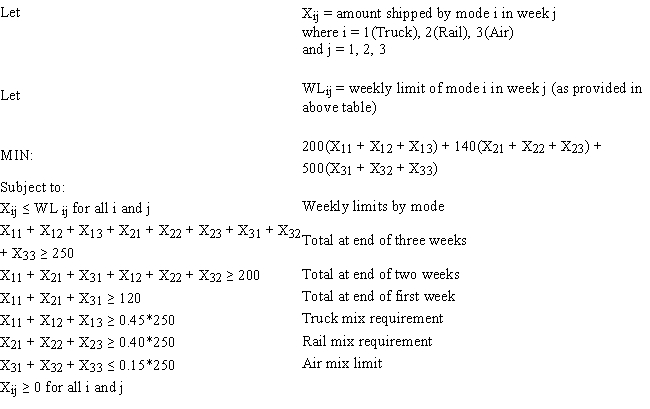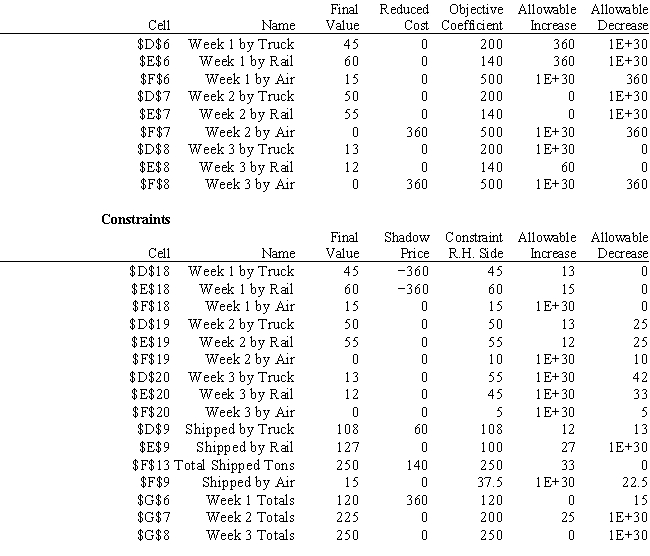Exhibit 4.1
The following questions are based on the problem below and accompanying Analytic Solver Platform sensitivity report.
Carlton construction is supplying building materials for a new mall construction project in Kansas. Their contract calls for a total of 250,000 tons of material to be delivered over a three-week period. Carlton's supply depot has access to three modes of transportation: a trucking fleet, railway delivery, and air cargo transport. Their contract calls for 120,000 tons delivered by the end of week one, 80% of the total delivered by the end of week two, and the entire amount delivered by the end of week three. Contracts in place with the transportation companies call for at least 45% of the total delivered be delivered by trucking, at least 40% of the total delivered be delivered by railway, and up to 15% of the total delivered be delivered by air cargo. Unfortunately, competing demands limit the availability of each mode of transportation each of the three weeks to the following levels (all in thousands of tons):  The following is the LP model for this logistics problem.
The following is the LP model for this logistics problem. 

-Refer to Exhibit 4.1. Are there alternate optimal solutions to this problem?
Definitions:
Malicious Compliance
The act of intentionally following orders or instructions in a way that is known to cause harm or failure, using adherence to the directives as a form of passive aggression.
Organizational Change
The process by which companies or organizations change their structure, strategies, operational methods, technologies, or organizational culture to affect change within the organization or to respond to external influences.
Cost-Cutting Strategy
A business approach aimed at reducing expenses to improve overall profitability without compromising the quality of products or services.
Planned Organizational Change
Deliberate efforts to modify an organization's processes, culture, or structure to improve effectiveness.
Q28: How is an LP problem changed into
Q28: A number of practical decision problems in
Q33: Refer to Exhibit 3.3. Which of the
Q44: Multi-objective linear programming (MOLP) provide<br>A) a way
Q46: The error sum of squares term is
Q70: Jones Furniture Company produces beds and desks
Q73: Robert Hope received a welcome surprise in
Q95: Suppose that there are 3 variables in
Q128: If two variables are inversely related, then
Q166: Refer to the above tables. If North